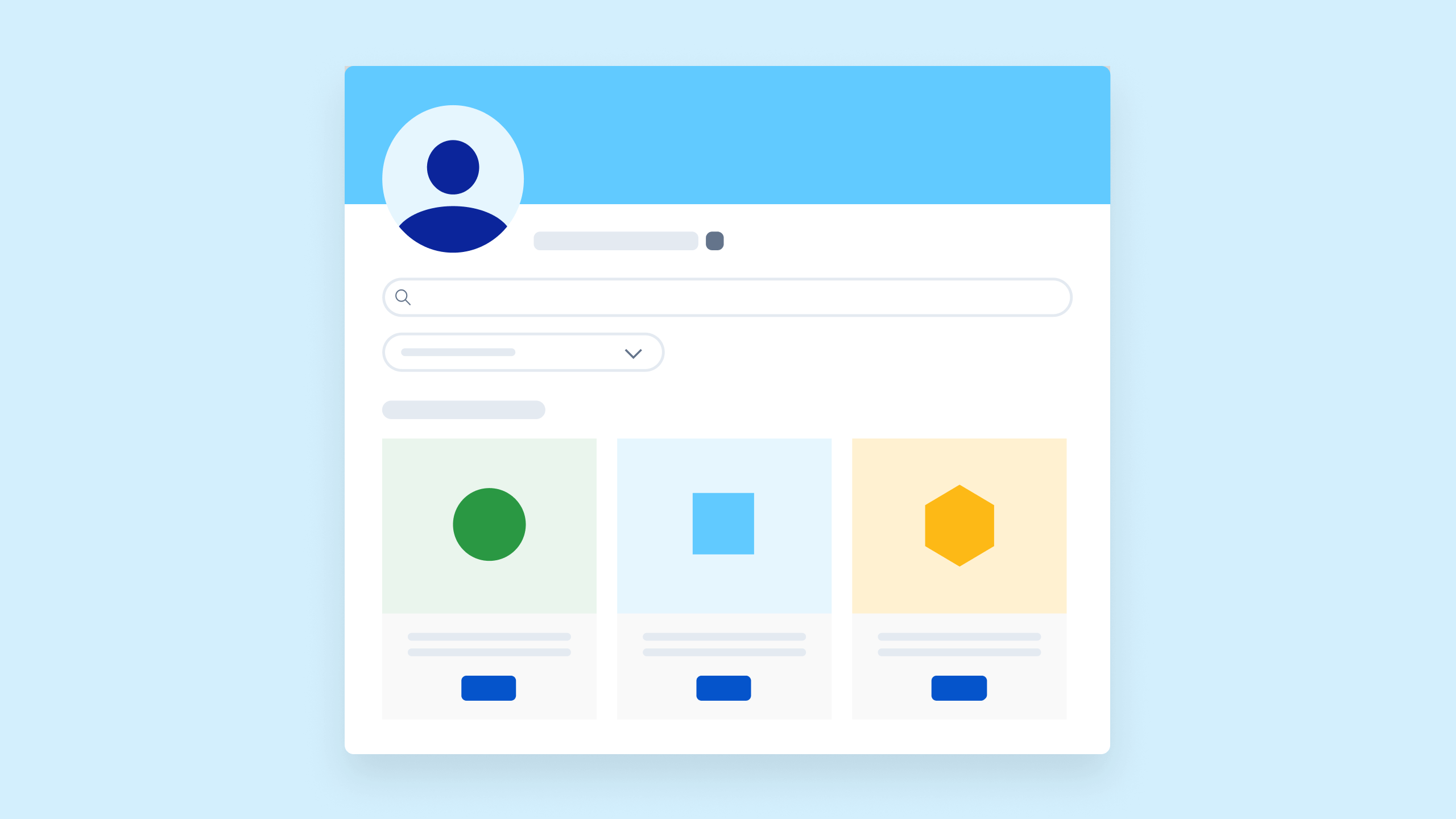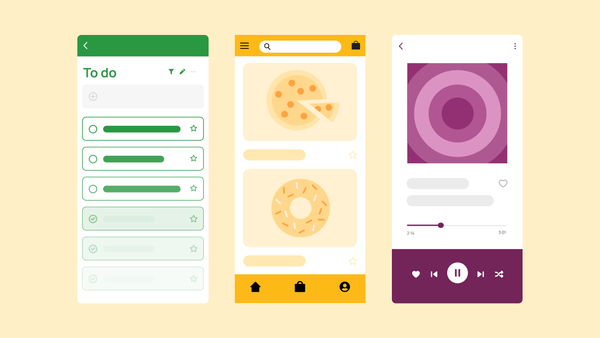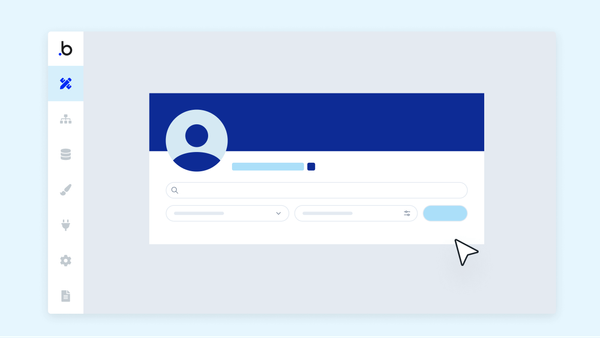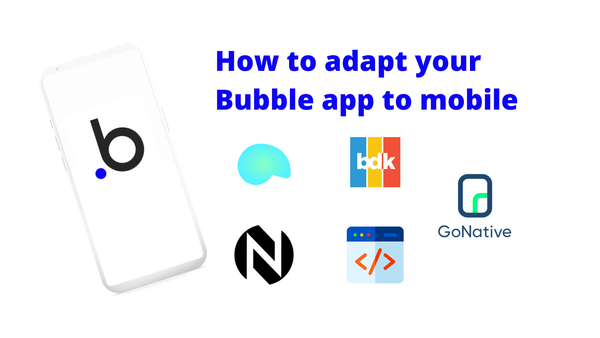Heads up: the way you’re thinking about MVPs is probably outdated.
Traditionally, the term MVP (minimum viable product) refers to a lightweight but fully-functional version of your product meant for idea validation and user testing.
Unlike a prototype, an MVP offers real functionality to end users. The problem? Most prototypes and MVPs are built to validate ideas and get user feedback — and then they’re thrown out so your dev team can rebuild your “actual” product from scratch.
In today’s world, tech companies need to move fast. You don’t have time or resources to waste on building things that are just going to get thrown away.
That said, MVPs still have a valuable purpose to serve. Every founder knows not to just launch Plan A and assume it’ll be perfect.
Enter: the new MVPs. Instead of making a disposable MVP made to validate and then toss, you need a scalable MVP that can go beyond user testing and idea validation and serve as V1 of your product.
The new MVPs: Build V1 from day 1
We’re just going to come right out and say it: Prototyping is dead.
Gone are the days when you had to build something specifically for idea validation and user testing only. Why waste time and energy when you could just build your product from day one, scaling and iterating as you go?
Tools like Bubble allow you to build a minimum viable product that serves as V1 of your product, rather than a disposable MVP.
Production-grade, no-code software allows you to build quickly, with fewer resources. Once you’ve tested your ideas with your MVP, you can instantly iterate and incorporate user feedback — right into your actual product, making growth and iteration processes seamless.
MVPs vs. Prototypes: What’s the difference?
Traditionally, the tech world has grouped MVPs and prototypes together. Both are used to validate an idea, test your product with potential users, and provide a blueprint for building your product.
However, as more founders and developers use no-code tools like Bubble to build fully-functional products from day one, there's a growing list of differences between what MVPs can be and how prototypes are used.
Ultimately, prototypes are short-term, visual representations of your product ideas that are helpful for early-stage idea validation and internal testing. Building a V1 MVP allows you to launch and offer real functionality to users right away. From there, you can iterate directly on your MVP as you grow your product and audience.
“The goal of a prototype is to be thrown away at some point, after it has served its purpose (usually testing a hypothesis). An MVP, on the other hand, should be able to evolve, iteration after iteration, and hopefully lead to a scalable version of the product.” - Arthur Kieffer, founder and CTO of Cube
Why build an MVP?
Companies of all shapes and sizes have used minimum viable products to test and iterate on products before releasing their first version. But for startups, a minimum viable product is even more important — you have concepts to prove, an audience to build, and ideas to validate.
Building an MVP — especially a scalable one — can help you learn and grow faster than following the traditional product development timeline. Here’s how:
Get actual user feedback
One of the biggest benefits of scalable MVPs is that they allow you to get actual feedback from early customers, not just feedback from testers in a controlled environment.
With prototypes, the feedback you’re able to get is limited to theoretical feedback from focus groups. With an MVP, you can make a functional product that can be used “in the wild” and get feedback based on real experiences.
As Vlad Leytus, co-CEO of Airdev points out,
“There’s only so much value you can get out of asking potential users questions about what they would use and how. By building an MVP, founders can find out whether people will actually use their product and exactly how they will use it. Then they can shape the product’s roadmap based on those learnings.” - Vlad Leytus, co-CEO of Airdev
This feedback can validate your ideas and help you iterate more effectively, while also guiding your product roadmap and providing more valuable insight.
The benefit? Less time wasted on trial and error, and more time spent developing the features your users need and want. Plus, as product manager Waleed Mudassar highlights, it’s a lot less risky financially, too:
“By launching an MVP, you gain early feedback from the market, enabling you to pinpoint which pain points to prioritize and which features are essential for your target audience. This approach mitigates the financial risks linked with developing a full-featured product that might not resonate with the market.” - Waleed Mudassar, Product Manager at Chakor
Test and iterate more quickly
As you gather more valuable customer feedback from your MVP, you can strengthen your product validation, develop a stronger roadmap, and test and iterate quicker and more effectively.
Rodrig Naska, Product Lead at Revido, points out how quickly customer feedback can change the direction of your product:
“We’ve worked with clients that had a set idea in mind about their product — but more than 50% of the time, that changed a lot after a few sprints, as they had an actual product in hand they could test with users. Thus, I think it’s crucial not only to test an MVP (even if selectively) but also build it in sprints so that you can iterate after each sprint.” - Rodrig Naska, Product Lead at Revido
When you put your MVP out in the real world, you can iterate more quickly based on what your users truly need, and not based on what you think they need.
“The trap that a lot of founders fall into,” Vlad from Airdev says, “is to keep building something perfect [in hopes that] the customers will magically fall in love with the product from first sight. A much wiser approach is to build simple, launch, get feedback, and iterate based on real world data, rather than on your own assumptions of it.”
An MVP encourages learning and helps you avoid the perfectionism trap. But instead of having to build an MVP just to learn from it and then scrap it, a scalable MVP sets you up to learn faster and be able to immediately incorporate those learnings into your actual product.
Provide more value to the user
Scalable MVPs also allow you to provide more value to your product’s initial users right off the bat, rather than starting with a prototype just for testing and having a long build process.
“Typically, prototypes would be used in moderated and unmoderated user testing sessions which offer little to no value to the user. MVPs, however, innately provide value to the users as a standalone product, so you can release it to more people and gather more insights.” - Maria Posa, Bubble Development Manager
This is one of our key goals and values at Bubble, both for our product and for our users. We want to launch and ship new features quickly, then gather feedback and iterate quickly. This allows us to keep making Bubble the best it can be, and as useful as possible for our users’ actual needs.
However, we also built Bubble to help you use your MVP as V1 of your product — delivering value to your users more quickly than ever before.
Grow your audience faster
Even better: a scalable MVP allows your startup to enter the market faster and start building traction quickly. Your early users can spread the word about your product organically if it’s functional enough to benefit them.
That’s why some startups prefer to build a minimum marketable product instead — a basic version of your product that still has enough features so that users love it. Whichever way you spin it, early adopters can both provide feedback and help grow your user base via word of mouth.
How to build an effective MVP in 6 simple steps
OK, you get it — scalable MVPs rock and are an essential tool for startups. Here’s how to go about building one that does the job effectively.
1. Start with your (potential) users
Your minimum viable product is a great way to validate and test your idea with your future customer base. But before you even get to that point, you need to start with your audience and target market. Doing market research before you start building your MVP can help:
- Identify user personas, markets, and use cases
- Understand user behavior and desires
- Validate your overall idea and vision
- Provide clarity for an initial direction and key features
Once you know who your users are and what they need, you can move to step 2: determining just one problem to solve first.
2. Define your problem to be solved
Once you’ve validated your idea with your target audience, you need to define the exact problem your MVP will solve. After all, even with a V1 MVP, the goal is not to create your fully-fledged vision. It’s to build the first version of that product, starting with a single problem and solving it well for the user. You can build up from there.
“Focus on just one (maybe two) core problems from your user’s perspective. What pain points are you trying to alleviate for them? Do that one thing, and do it well, and users will find value from your product. Don’t try to do it all with your first try.” - Maria Posa, Bubble Development Manager
To figure this out, take what you’ve learned in your user research and boil it down to one core problem. This is your solution for your V1, which you can then validate, iterate on, and expand as you continue building your product.
3. Determine the key features and functionality needed for an MVP that solves your target problem
Once you’ve chosen the core problem your MVP will solve, you'll be in a good place to determine the key features and functionality to include in your minimum viable product.
Start by visually outlining the user flow, step-by-step. As you do so, you can answer questions like:
- How will users finish a task or complete a goal related to the core problem?
- What pages and navigational features will need to be included to complete those tasks?
- What minimum features are necessary to solve the user’s problem?
A product roadmap can give you a visual framework for determining which features are essential for the current iteration.
You can also think about features and functionality in terms of user stories and pain points, as Rodrig Naska, Product Lead at Revido recommended to us:
“The most important step in building an MVP … involves understanding your target users' pain points and ensuring that the MVP directly solves this problem in the simplest way possible.
Oftentimes, we're able to work out what features are the highest priority by working out with our clients the following:
What user roles will have access to the app?
What are the user stories for each user role?
Which user stories are must-to-haves, should-haves, and nice-to-haves?”
By focusing on your most important problem to be solved and your most important user stories, you can break down which features must be included in your V1 and which can be saved for later iterations.
4. Scope down (and down again)
Scope bloat and feature bloat are real.
As you’re building your MVP, you’ve got to stay focused on the goal: getting a basic product out there to test and iterate with real users.
Maria Posa told us this is by far one of the hardest — yet most important — steps to building an MVP. “The last thing you want to do with an MVP is allow the scope to grow until you’re building a full product. This delays your launch and therefore your learning opportunities. You’re probably making some wrong choices anyways!”
Not only does it prevent you from launching and testing more quickly, it also drains resources.
“When you’re building an MVP, it’s crucial to prioritize essential features for idea validation while steering clear of unnecessary complexities that drain resources. Resist the temptation of feature bloat, which can lead to wasted time and money. Unfortunately, many entrepreneurs fall into this trap, focusing on quantity over quality, without considering the genuine needs of their users. This oversight can result in significant resource misallocation, falling to deliver what customers truly value.” - Waleed Mudassar, Product Manager at Chakor
Scoping down can feel like you’re diminishing the value you’re providing with your MVP. In reality, it allows you to provide the most value for the most important features. Scoping down also helps you allocate resources effectively and validate what users really need and want before building further.
5. Build on a platform that scales with you
Once you’ve determined your why, found your initial problem to solve, and narrowed down your scope, you’re ready to start building.
While there are plenty of prototyping tools you can use to build a prototype or even an MVP, our recommendation is to build right from the start on a tool that can scale with you as your company grows — all the way to IPO, as we like to say. Even now, most prototyping tools don’t support scalable MVPs.
On the other hand, if you build your MVP yourself with code, you run the risk of accumulating tons of technical debt — not to mention that it’ll take loads of time and resources.
Using a platform like Bubble allows you to consolidate your tool stack and your resources. With Bubble, you can move seamlessly from prototyping and V1 MVPs to official launch, product development, and beyond.
After all, why use multiple tools when you could just use one?
6. Launch and learn
Finally: You’re ready to launch!
With an MVP, you'll likely need to launch before you feel ready. Remember: The goal of an MVP is to get useful feedback, test your product, and iterate based on real user needs. To do that, you have to actually ship your MVP.
So get it out there.
Once you’ve launched, your job isn’t over. Have a method in place from the beginning to collect data and start gathering user feedback. As Vlad Larin, co-founder of Zeroqode, says,
“Launch early and set up a system to analyze and validate your assumptions. Be it analytics, talking to customers, or other criteria — the point of building an MVP is to learn, not to hit the jackpot from the get-go.” - Vlad Larin, co-founder of Zeroqode
Validated learning helps you take your idea from “just a concept” to a final product in the least amount of time, with limited resources, and without a ton of effort.
What do successful MVPs look like?
Traditionally, “success” for an MVP typically looked like getting solid user research or growing an audience to validate your idea.
With an MVP that can scale, success can scale too — and come a lot faster.
For example, one Bubbler, Erik Silk, had recently joined a new startup, BluBinder. After a recent round of investments, BluBinder needed to show progress fast, and had increased pressure to get their product to the market.
A traditional dev team and production cycles starting with prototypes and MVPs would have taken several months. Enter: an MVP on Bubble. Erik built a live, functional V1 that could go to market and continue to be iterated on with Bubble — and it only took one month.
For another example, just look at Eissra Eltom, founder of Verve. After building an MVP of the marketplace on Bubble, Verve became an instant hit, driving $60,000 in revenue during its first quarter. Alongside growing her customer base, she was also able to provide a fully-functional proof of concept for potential investors and partners. From there, she could continue to iterate directly on her already-launched product instead of having to build and ship something totally new.
For Erik, building a minimum viable product first meant faster progress, quicker time to market, and a more valuable foundation for investors. For Eissra, an MVP allowed her to work quickly on her own, sending the basics of her product to market to get feedback, buy-in, and initial traction with her target market. From there, revenue and further investments weren’t far behind.
Ready to build and launch your MVP?
Stop building things just to throw them out later, and start building something that can grow with you. Bubble’s full-stack, no-code platform supports and consolidates every stage of your product development cycle — from proof of concept and MVP to fully-fledged product launch and IPO.
Of course, you could use multiple tools to help support all these processes — but as Vlad, co-founder of Zeroqode says,
“Pen and paper are the best for a quick start. But then, Bubble all the way — why use several systems if all can be done in one?”




